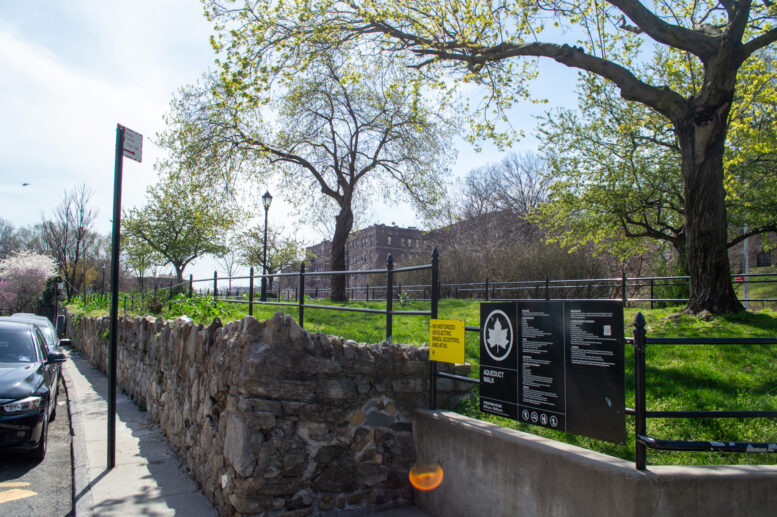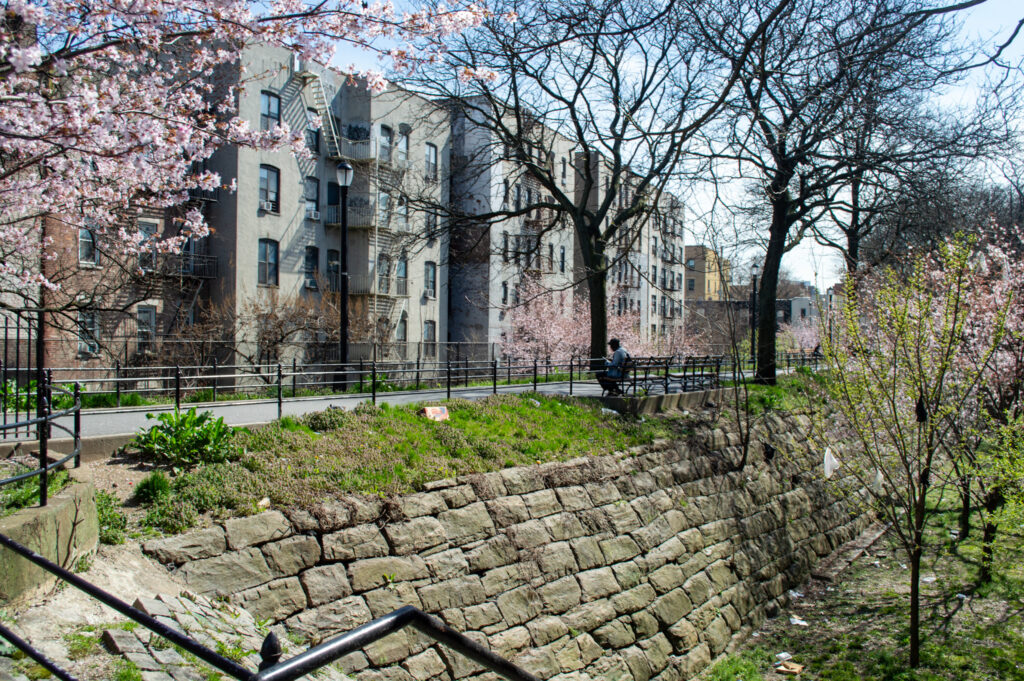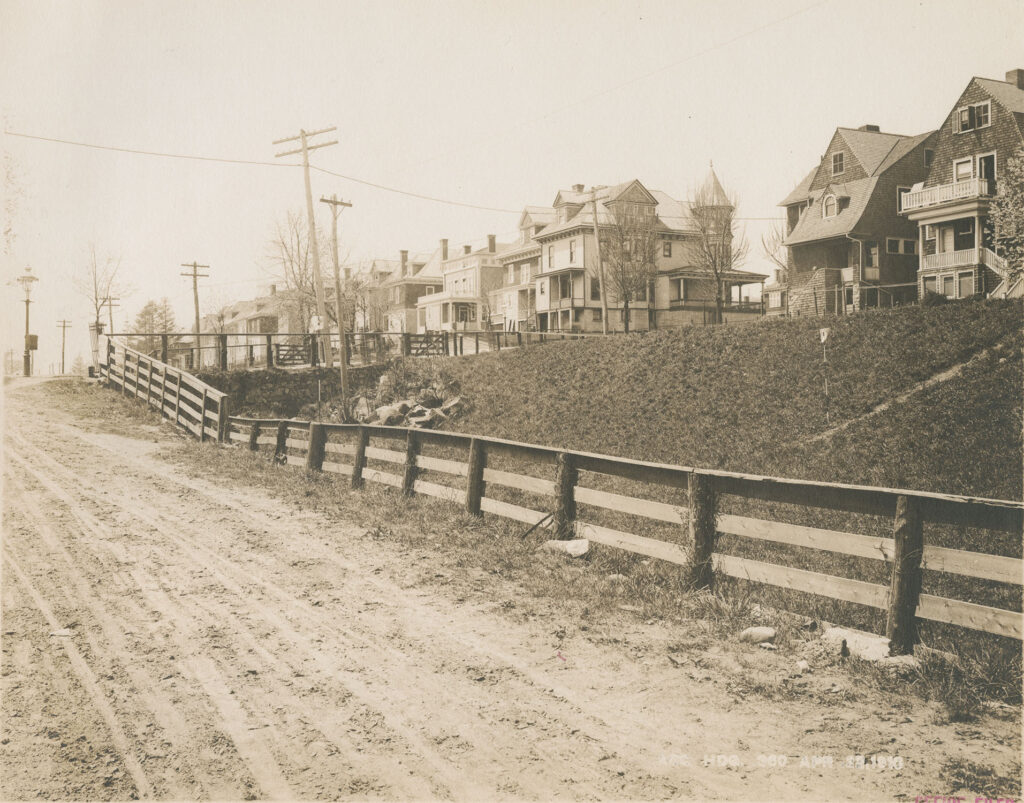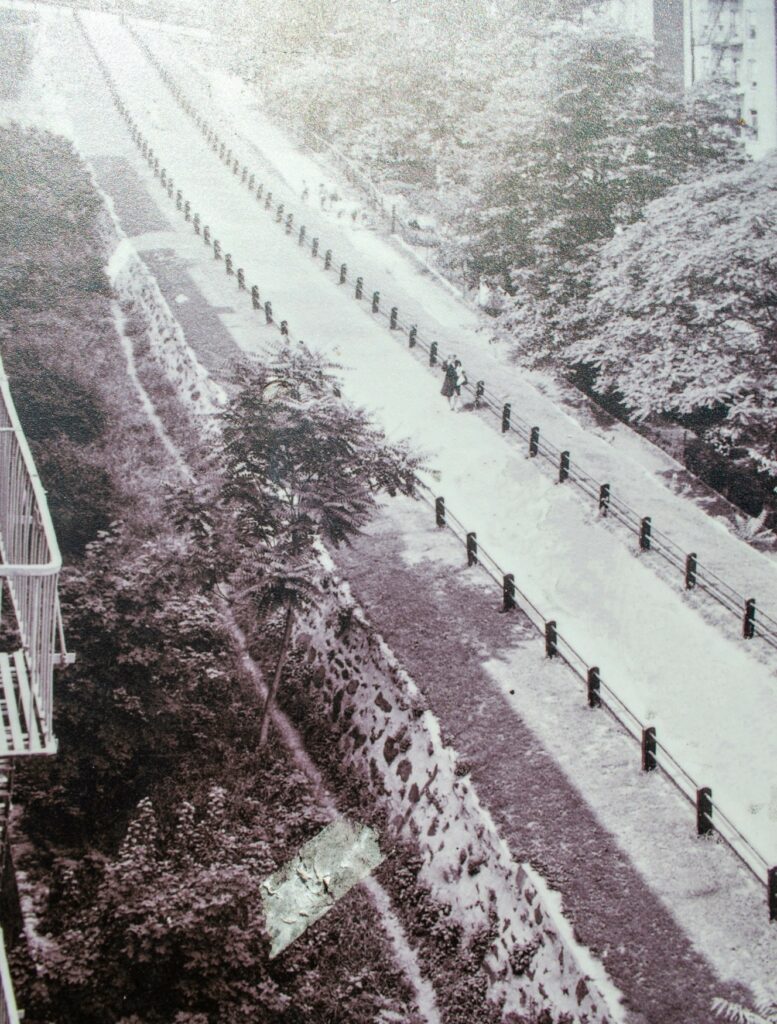New York City Landmarks Preservation Commission and NYC Parks recently unveiled three historic markers commemorating the Old Croton Aqueduct Walk, The Bronx‘s first scenic landmark. The aqueduct opened in 1842 and was an engineering marvel that brought the first direct fresh water supply to New York City. The walkway built atop its stone embankments has long served as a public space for the local community. The markers, funded by the New York Landmarks Preservation Foundation, have been installed at three locations along the walkway in The Bronx.
The Old Croton Aqueduct Walk, which has officially been a part of the NYC Parks Department since 1930, has undergone upgrades to improve public access while maintaining its historic character. The historic markers aim to raise awareness of the aqueduct’s role in New York City’s development and honor the community’s efforts in preserving the public space.
The marker text highlights the aqueduct’s construction by Irish immigrants, its opening in 1842, and its designation as The Bronx’s first Scenic Landmark in 2024. The installation is part of the New York Landmarks Preservation Foundation’s Historic District Marker Program, which fosters public awareness and civic pride in designated historic districts and landmark sites across the five boroughs.
“Old Croton Aqueduct Walk is a symbol of New York City’s long history of innovation and achievement, and a powerful example of the critical role our green spaces and public parks continue to play in connecting communities and building a better quality of life for all New Yorkers,” said Landmarks Preservation Commission chair Sarah Carroll. “With the installation of the historic markers today, we honor the ingenuity of those who came before us and laid the foundation for a more modern and prosperous city, and we celebrate the stewardship of NYC Parks and the long-standing commitment of local residents and community groups, whose dedication to this idyllic pathway has helped ensure it will be preserved for generations to come.”
Subscribe to YIMBY’s daily e-mail
Follow YIMBYgram for real-time photo updates
Like YIMBY on Facebook
Follow YIMBY’s Twitter for the latest in YIMBYnews









Too bad many of the houses in the older pictures didn’t survive. A few did in the are but mostly they were demolished to make way for buildings. Quite a few architectural gems were lost in the name of “progress”.
Well, Ocean Grove, NJ, has preserved a large number of similar houses. The problem is that houses of that era lack anything resembling insulation. The wooden lath for plaster and balloon framing allowed fire to quickly spread through the structure. This is the major cause of loss in Ocean Grove. Replacements there are required to be in Victorian style.
I agree that the extension of the subway into the Bronx signaled the end of many Victorian houses with the building boom of 6-story apartments.
I used to live near Burnside Ave. where the aqueduct formerly crossed the road on a stone bridge. This was replaced with an inverted siphon c. 1930s. Back in the 1970s, walking on the aqueduct was dangerous owing to its limited exits.